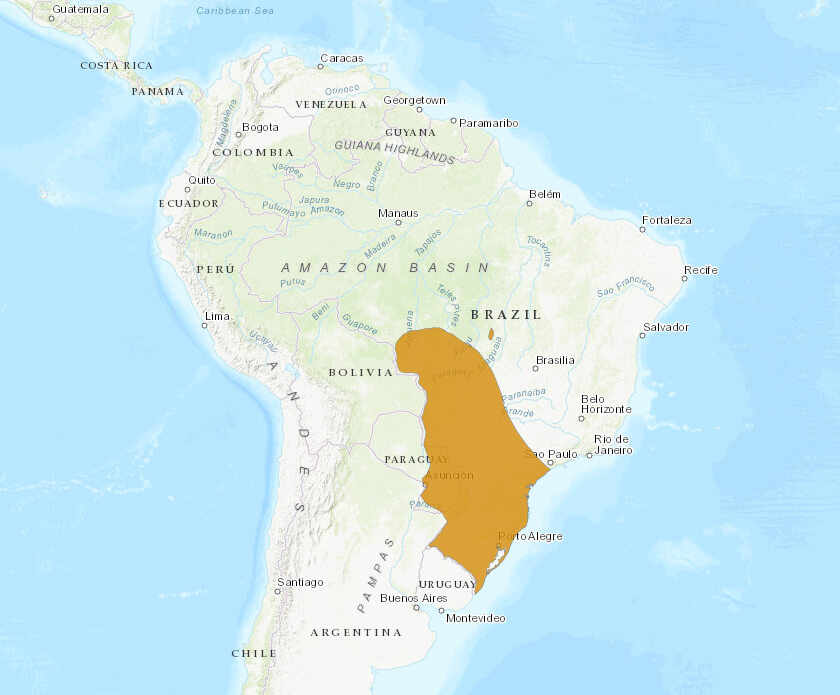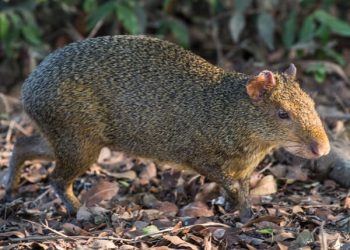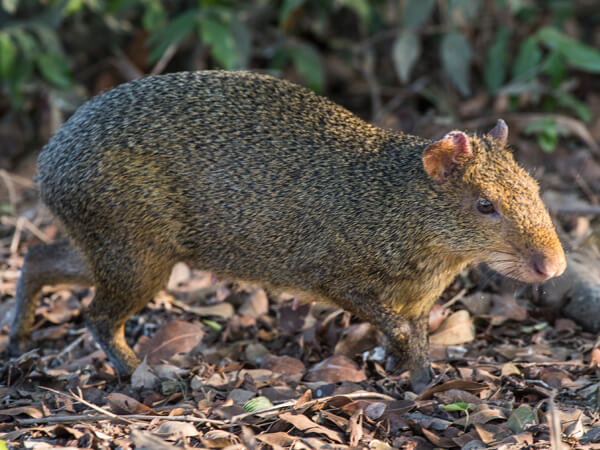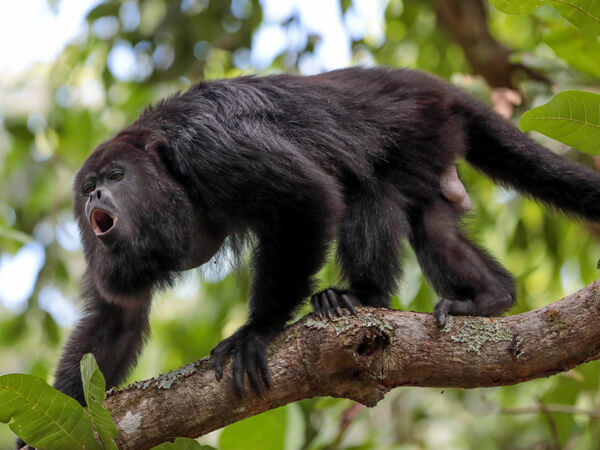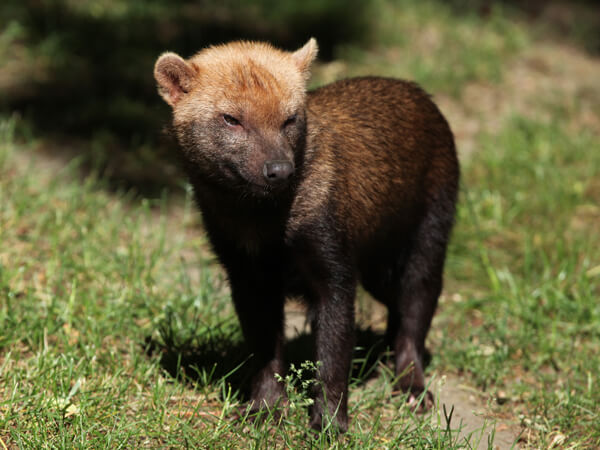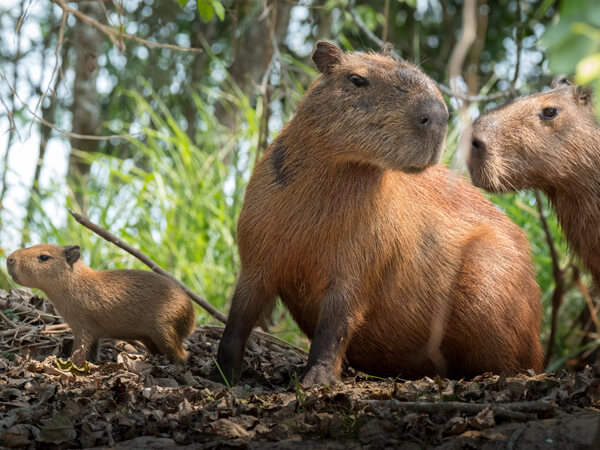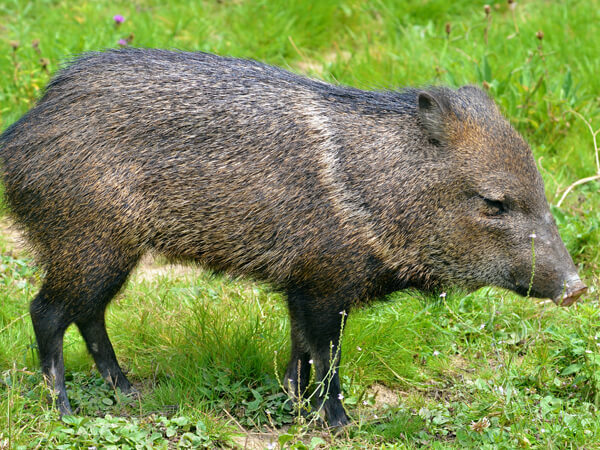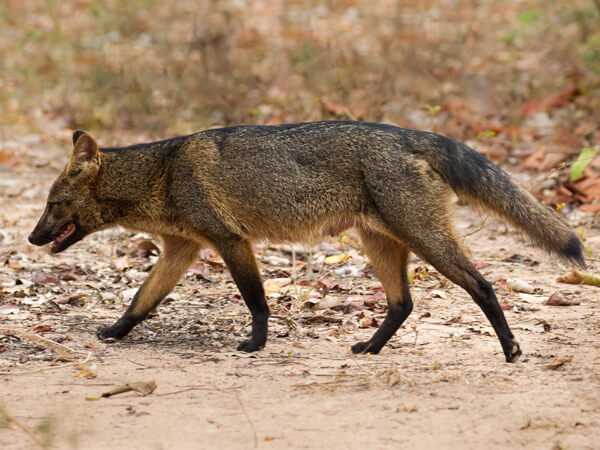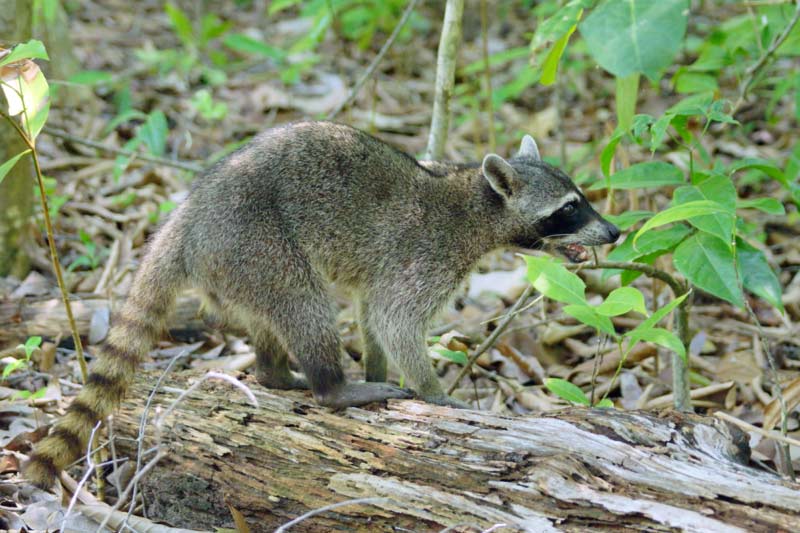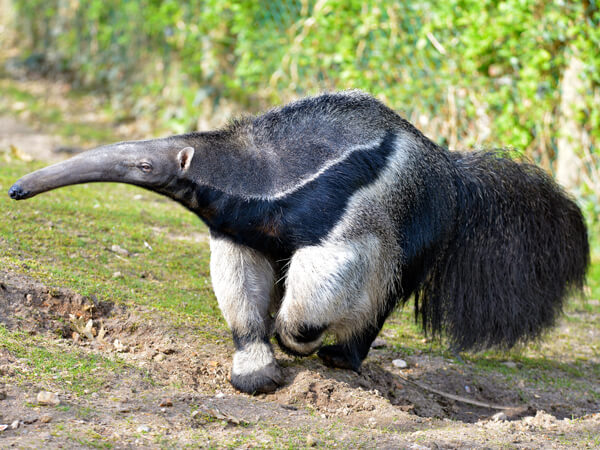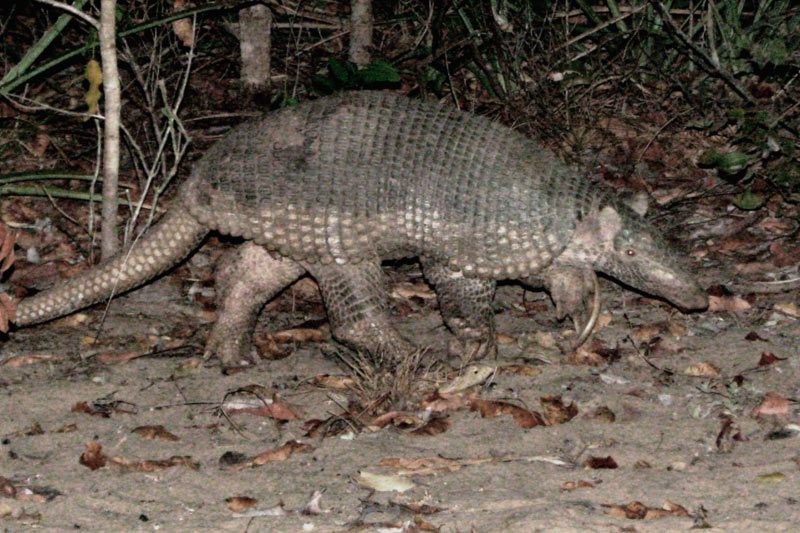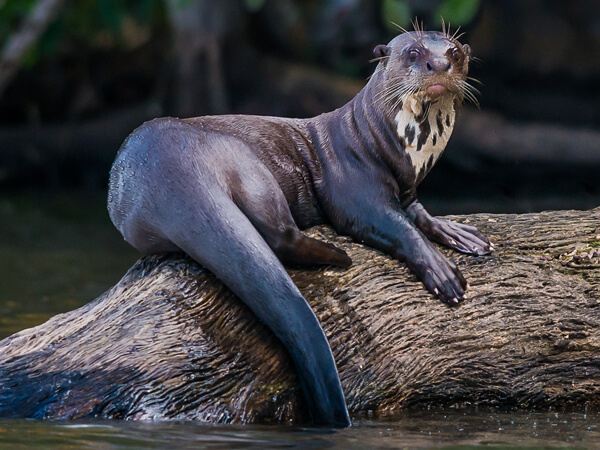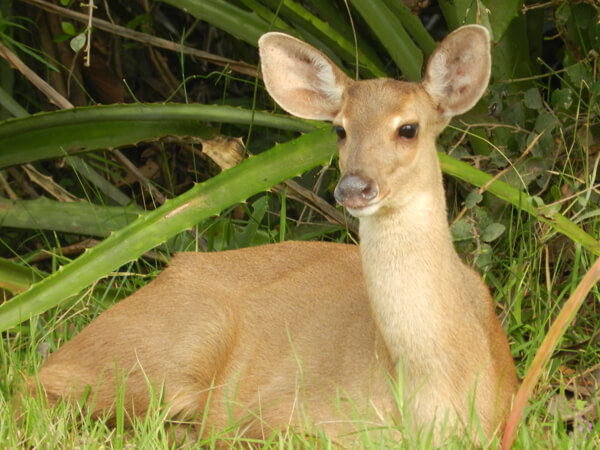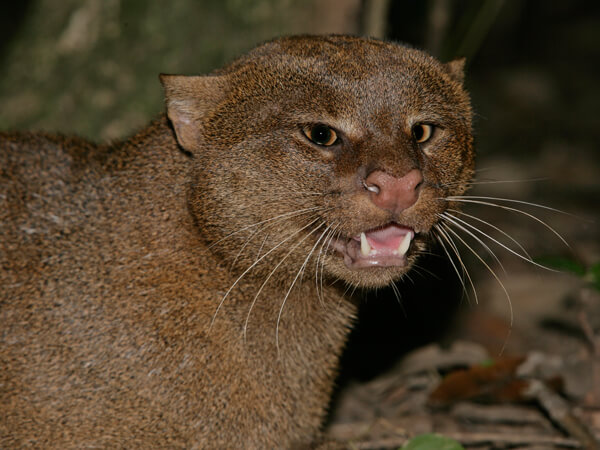Certain skull-dental features distinguish members of this family. Seven species of agouti inhabit the Brazilian territory: D. azarae is the best known and is present in the Pantanal.
Click to learn more
Distribution
Azara’s agoutis occur throughout the Brazilian territory, but the distribution of D. azarae is restricted to the midwest, south and southeast of Brazil, as well as to the west of Paraguay and northwestern Argentina.
Features
The body of the Azara’s agouti is covered by coarse fur, with a little or no tail, and hind legs with only three toes. They measure between 49 and 64 centimeters in length, and weigh between 1.5 to 5 kilograms.
Behavior
Azara’s agoutis dwell in forests, savannahs and scrublands, usually situated near water. They live in pairs, but sometimes form large groups when feeding in places where there is abundant food. Their living areas encompass between two and three hectares, and they always use the same trails and areas for sleeping and eating. They use odors to communicate between individuals and to mark the places where they have buried food.
Food
Azara’s agouti feeds on fruits, sprouts, seeds and roots, and eats by holding food with the front paws. They habitually bury their food in order to eat later in times of shortage, often hiding the food far from the place where it was gathered. As Azara’s agoutis often forget where they buried the seeds, these eventually germinate, leading to the agoutis being regarded as important seed dispersers. One example is the Brazil nut, which has a hard shell that needs the strong teeth of an Azara’s agouti to open.
Reproduction
Gestation takes 105–120 days, after which time two to three cubs are born. They stay with their parents until the birth of the next litter. The cubs are born with their eyes open and are able to walk immediately. They hide for some time, usually in holes made by other animals.
Conservation
Due to lack of studies on the species, it is considered as having “insufficient data” to determine their conservation status by the IUCN, and is listed as being of “least concern” according to the national list of ICMBio. However, Azara’s agoutis are heavily hunted for their meat throughout the range of areas in which they are present, which is leading to a decline in their populations.

